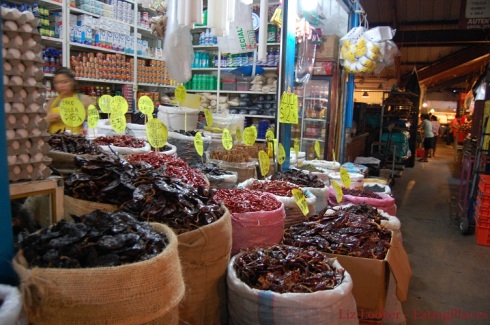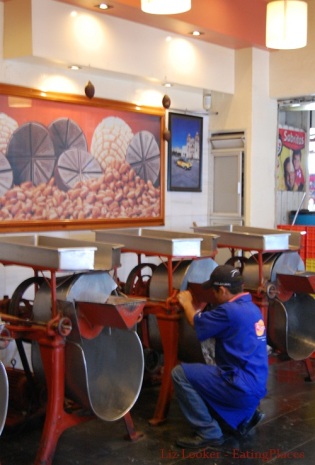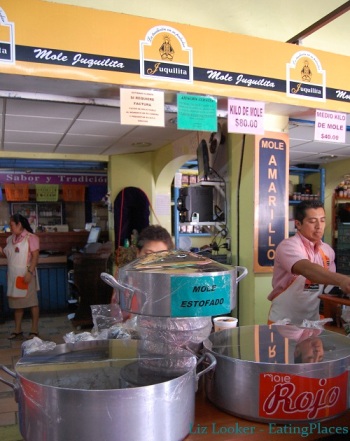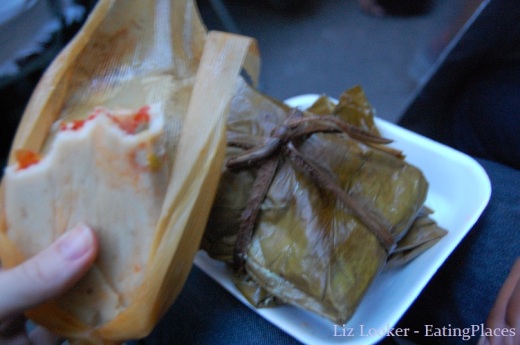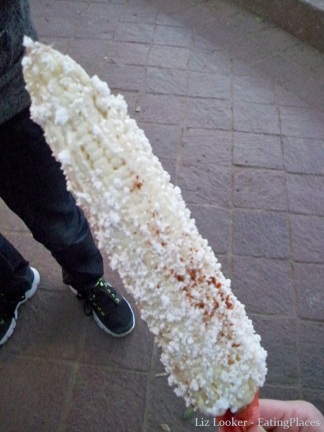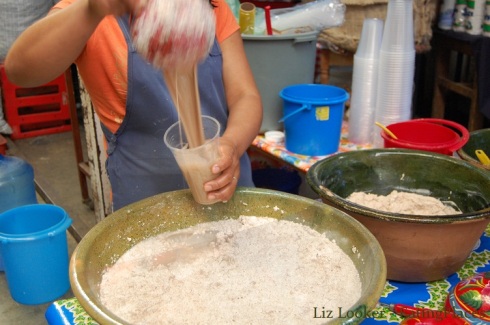
Home-brewed hombucha with fresh strawberries; fizzy lavender kombucha
I started a new kitchen project a few months ago, and I’ve been waiting until I was confident with the process to share it with you. I’ve entered the world of homemade kombucha!
- Wash the glass container in the dishwasher or with very hot water.
- In a pot on the stove, bring 1 liter water to a boil. Particularly if you’re using tap water, let the water boil for at least 5 minutes. Add 1/4 cup of sugar and stir until dissolved.
- Remove from heat and add 3-4 black tea bags, cover, and let brew for about 10 minutes. Remove tea bags and let sit until room temperature.
- Wash your hands (not with antibacteria soap!) before touching the SCOBY. Any natural soap is fine, a little apple cider vinegar or already-made kombucha works, too.
- Pour the cooled tea and the kombucha starter liquid into the glass container. Carefully (with clean hands), place the SCOBY on top of the liquid. It’s best if it floats or is somewhere near the top.
- Cover the container with the cotton cloth and put in a warm place where it won’t be disturbed for about a week. I keep mine in the corner of the kitchen covered with the towel so it’s dark. If it’s cold the fermentation process will take a bit more time, but as long as it’s above 65 F it should be fine.
- Wait it out. I like to carefully check on my kombucha every few days to see that nothing funky (i.e. mold) is growing and that the SCOBY is still on top of the liquid. If you see mold at any point, you’ll need to throw everything out and start over with a new SCOBY. I haven’t run into this problem though, and as long as you keep the environment clean, you should be fine.
- After about a week, taste the kombucha to see if it’s a good sweetness level. I usually do this by removing the SCOBY with clean hands, giving the tea a tiny stir with a non-metal spoon, and then taking out a little spoonful to taste. The longer you wait, the tea will contain less sugar and taste for more vinegar-like. If it’s too sweet, you can re-cover and let it ferment longer (I’ve done up to 3 weeks in colder months). You can drink the kombucha at this point, but I recommend doing a quick second fermentation.
Second Fermentation
- When the kombucha in step 8 above is ready, clean the clear glass containers that can be sealed. You can use any size for this, but I prefer to use single-serve, 16 oz bottles.
- This is where you can get creative with flavoring! Start with something simple like a few pieces of fresh ginger (and see below for more ideas). Put the ginger or whichever fruit/herb/flavoring you’re using in the bottle. This is also where you can choose to filter the kombucha and get rid of any brown stringy material that has developed by using a fine mesh strainer. This doesn’t bother me so I just leave it in. Pour the kombucha into the bottle. Seal the bottle. Repeat until all kombucha has a second fermentation home.
- Place the sealed bottle(s) in a warm dark place for 1-3 days. I put the second fermentation inside a kitchen cabinet. You also might want to label the bottle with the date.
- After 1-3 days (less if you don’t want much carbonation, more if you like it fizzy), put into the fridge, which will stop the fermentation process. If there are small pieces like lavender buds in your batch, you’ll want to strain the kombucha before drinking.
- Enjoy!
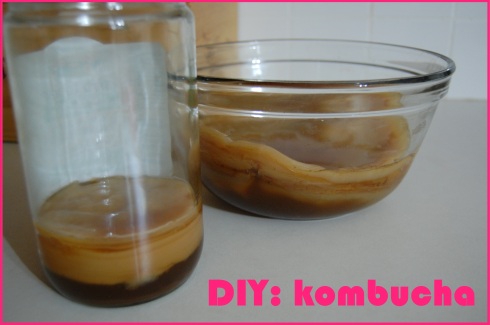
My small and big SCOBYs in kombucha starter liquid
Frequently Asked Questions about Kombucha:
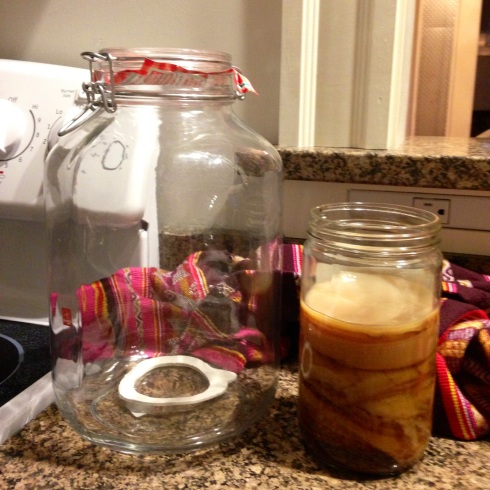
Check out this huge Italian Fido jar. I can’t wait to use it!
So that’s the beginning of my kombucha story. I look forward to learning more and hope you’ll come along with me for the ride.
Have you or someone you know tried to make kombucha? I’d love to hear about it!




